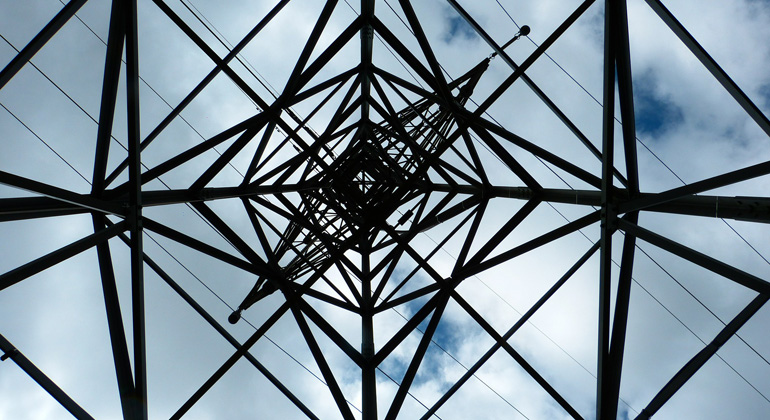Surprising findings on renewable energies and interferences in power grids
The wind and the sun are environmentally-friendly power suppliers. However, as they cause a fluctuating energy supply, such renewable energies place a greater burden on power grids than previously thought.
This is the finding of a study conducted at Jacobs University Bremen and now published in the renowned “Scientific Reports” journal published by the Nature Publishing Group. However, the intensity of this load depends to a large extent on the structure of the grids. Surprisingly, a certain type of power grid has proved to be particularly stable – a power grid from which researchers least expected such a result.
Frequency fluctuations in power grids are the order of the day. The more renewable energies are fed into the grid, the greater the load on the grid. It not only has to cope with large fluctuations, but also with increasingly small-scale, heterogeneous and decentralized power generation. A research project conducted at Jacobs University Bremen and headed by Stefan Kettemann, Professor of Theoretical Physics, investigated these fluctuations.
They show that the increased feeding in of renewable energies leads to more interferences. Kettemann and his team investigated at what speed and in what way interferences spread in the grid. One of the results of the basic research: even the slightest fluctuations, caused, for example, by a brief increase in electricity feed-ins in Bremen, can be measured over long distances, even in Munich, which is almost 600 kilometers away as the crow flies. But above all: certain grids are more robust than others. “We were particularly surprised to find that tree-like distribution networks leading from the generator to the consumer are more stable in respect of such interferences than close-meshed interconnected grids in which the power lines are connected in many loops in a circle,” says Kettemann. “The opposite would have been much more predictable. After all, a tree structure has much clearer and more hierarchical connecting lines than a circular grid with its multitude of meshes and loops.”
The researchers found the cause for this extraordinary phenomenon in the different oscillations, or wave modes, of both grids. Similar to organ pipes, whose deepest resonance tone becomes deeper with the length, it can be seen that the resonance frequencies of close-meshed composite grids become smaller with the size of the grid. This does not apply to tree-like grids. Their resonance frequency remains the same as their size increases, making them less susceptible to interference.
The results of the project have now been published in the “Scientific Reports” journal. It was funded by the German Federal Ministry of Education and Research (BMBF) as part of the Electricity Grids Research Initiative. Jacobs University is participating in the joint project “CoNDyNet” (Collective Nonlinear Dynamics of Complex Electricity Grids) with the teams of Stefan Kettemann, Hildegard Meyer-Ortmanns, Professor of Theoretical Physics, and Gert Brunekreeft, Professor of Energy Economics. The Potsdam Institute for Climate Impact Research (PIK), the Max Planck Institute for Dynamics and Self-Organization, the Frankfurt Institute for Advanced Studies (FIAS) and the Research Center Jülich are partners in the joint project.







